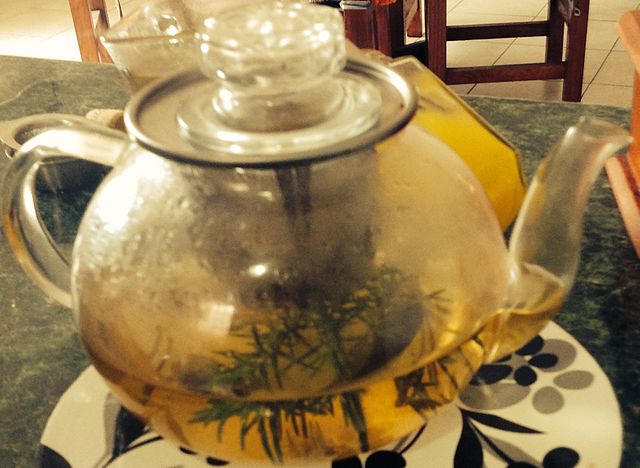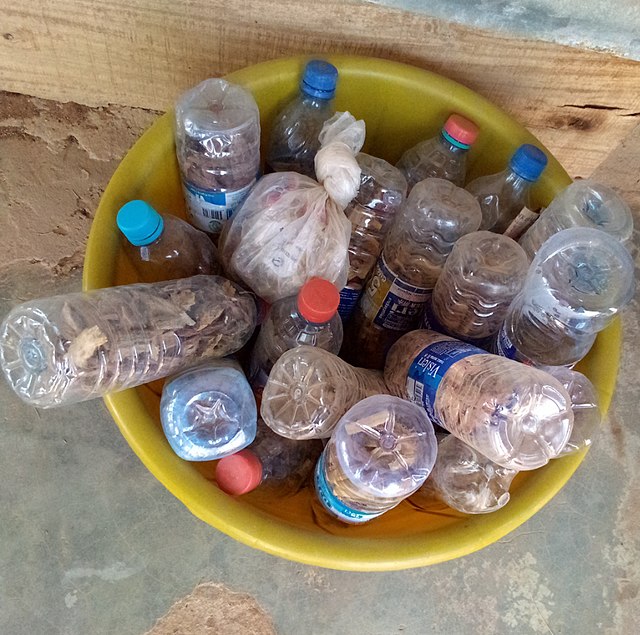Internal Uses of Medicinal Plants
CAPSULES
Herbal medicine is increasingly being taken internally via capsules or pills. The preparation entails gathering the herbs, drying them thoroughly, pulverising them to a powdered consistency and, finally, inserting the ground herbs into empty gelatine capsules. Like allopathic medicines, these herbal capsules are to be taken according to specific instructions, since, as is the case with prescription medicine and over-the-counter (OTC) pills, consuming in excess of the prescribed amount can result in mild to harmful side effects. It is important to note that while herbal medicine can provide quick relief, it does not provide an immediate cure for illnesses and may require a period of several days – and even several weeks, in the case of more severe illness – in order to serve as an effective treatment.
Herbal capsules may also be emptied and the contents used to make teas by adding hot water, or for making a poultice, which is has a paste-like consistency and is used topically on the affected area of the body
CLEANSES AND “WASH OUT”
‘Wash out’ is a traditional Jamaican herbal means of cleansing the body of toxins and parasites. Like herbal capsules, wash out is typically pre-packaged herbs, the popular kind being Mojo herb – which comprises senna pods, senna leaves, mojo and Epsom salts – that is taken as a laxative. Mojo herb, though taken by adults as well, is customarily taken by children and normally towards the end of the long summer school break to purge the body of parasites. It was sometimes given to boost appetite in picky eaters as it was believed that worms were the culprit in suppressing weight gain.
Senna pods
Senna pods are traditionally taken by adults as their ‘wash out’. The dried pods would be brewed like a tea and consumed at night. During the following morning, a mixture of four tablespoons of Epsom salts in three cups of water would be drunk as the second step of the cleansing process to further eliminate toxins from the body. The general belief is that the body oftentimes signals when a detox is needed, whether via poor and/or infrequent bowel movements, chronic fatigue, or congested skin, etc. Wash out is therefore a laxative for the bowels and, as such, should be followed up with drinking plenty liquids as the solution, being a laxative, can dehydrate the body and result in nausea.
herbal-fruit juice
The increasingly common use of the term ‘cleanses’ is associated with a herbal-fruit juice blend that is used to rid the body of toxins. Like the wash out, juice cleanses are essentially colon cleanses that serve to flush the large intestine of waste, including heavy metals, urea, uric acid and dead cells. Cleanses are also taken for weight loss purposes as they act as a natural laxative. By stimulating bowel movement (wherein the colon is able to expel its waste), cleanses help to boost optimal digestion and promote regularity. Cleanses are also taken to improve insulin resistance and stabilise blood pressure. Aloe vera and celery are popular choices. However, persons with diabetes are cautioned against taking cleanses without medical consultation as changes in dietary intake may result in dangerous dips in blood sugar levels. Improper use of cleanses can also cause severe diarrhoea which may result in dehydration and consequent electrolyte imbalance.
HERBAL TEAS
Teas are arguably the most common form of consuming herbs for their health benefits. Despite their name, herbal teas are not true teas (unlike green tea, black tea, and oolong tea) but are hot beverages brewed from the leaves, dried fruits, flowers, seeds and sometimes roots of herbs and spices. Herbal teas are traditionally used to treat a broad diversity of health concerns ranging from the apparently mild (e.g., intestinal gas) to the severe (e.g., acute infections and tumours).
Herbal teas are also used to treat hormonal imbalances and sexual dysfunction. Ginseng, for example, is used by men who struggle with low sperm count, and celery root is used to treat impotence. Menopausal women rely on black cohosh and evening primrose to manage hot flashes, and cinnamon and nettle are sometimes used by women to combat infertility. Additionally, marigold is used for uterine health and is also used to help to clean the postpartum womb, while dandelion is used to boost low milk flow in the breast.
Traditionally though, herbal teas are used to treat respiratory illnesses, ease digestive complaints, lower fever, relieve pain (including tension headaches, menstrual cramps and joint pain), and for treating various comorbidities, such as diabetes and hypertension. Herbal teas are also used to promote well-being. Chamomile, for example, is used to calm the nerves and induce relaxation.
Examples of herbal teas made from plant parts other than the leaf
Seed
Fennel tea is traditionally used to ease gripe and gas in babies. It is used as an aid for sleep disturbances. The tea is also used to increase milk secretion in the breasts and, overall, supports the female reproductive system. Fennel tea helps to reduce the formation of blood clots and acts as a blood purifier. It is a rich source of fibre and was used by ancient Christians as an appetite suppressant during periods of fasting.
Root
Dandelion tea is popular for its liver health support. It is used for weight loss and for controlling blood sugar levels. Dandelion tea is also used to treat inflammation, including appendicitis, and is also used to treat urinary tract infections.
Stalk
Celery tea is used for reducing bloating and aids weight loss. Its digestive support extends to decreasing stomach ulcers (because of its alkalising effect on foods) and improving the stomach lining. Celery tea is also used to improve eye health and is excellent for nervousness. It is also used to treat gout.
flower
Hibiscus tea is used to boost the immune system. It helps to fight bacterial infections as well. It helps to decrease blood pressure and lower blood fats levels which, in effect, help to lower heart disease. Hibiscus tea is also used for weight loss and promotes good liver health.
Fruit
Cayenne tea is used as a stimulant and for boosting the performance of the circulatory system, and for promoting good heart health. It helps with rebuilding stomach tissue and heals stomach and intestinal ulcers. It is also used in controlling diabetes.
TINCTURES, INFUSIONS AND DECOCTIONS

Herbs are also taken internally in concentrated form as an admixture of alcohol and sometimes vinegar. This blend, which is called a tincture, requires the herbs to be steeped in alcohol for several weeks (preferably in a sunny location) in order to extract their active medicinal ingredients. Traditionally, up to two ounces of herbs (such as chamomile, feverfew, cannabis) are left to steep in 16 oz. of alcohol. The tincture is shaken daily and strained at the end of the steeping period.
Tinctures are usually taken for physical relief for discomforts, such as allergies, indigestion, gas and headaches, as well as for chemical imbalances in the brain and hormonal imbalances in the reproductive system. The standard dose is typically a half teaspoon to one teaspoonful, with water, two to three times per day. When treating a specific condition, however, the dose tends to be a quarter teaspoon every 4 hours.
Tinctures may also be applied externally and act as skin toners. Popular herbs for these include white willow bark (from which salicylic acid is derived) and milk thistle.
Whereas tinctures tend to be room temperature treatments, an infusion is typically consumed warm and is considered a tea. The active ingredients of herbs (whether they are dried or fresh/green) are extracted via boiling them in water. Usually, it is the leafy parts or the flowers that are used to make infusions.

A decoction, on the other hand, is a solution using the same boiling process for infusions, but rather than using the leaves or flowers of the plant, the root is more typically used because it is usually the bitterest part of the herbal plant, which is also higher in mineral salts. Spirit weed, for example, is traditionally used to make a decoction for fainting, convulsions, and epilepsy. The plant may also be applied topically for this purpose and is also used to treat severe headaches.
Tinctures, infusions, and decoctions help to combat viral illnesses, such as the cold and flu and are used to treat infections from viruses as well as lung congestion. However, it is important to note that these preparations are to be made in non-aluminium wares as aluminium is believed to contribute to ulcers.
TONICS

A herbal tonic is a liquid solution made from a special blend of herbs and medicinal plants. Tonics tone tissue and help them to function as they should. They boost the immune system and promote overall physical and mental health. Herbal tonics are therefore beneficial in restoring vitality in the body and accelerating recovery from illness. Similarly, they are taken to combat fatigue and general malaise. Because of their general health benefit, most herbal tonics may be taken daily for regular maintenance or as the need arises.
Homemade herbal tonics are typically made by placing an ounce of dried herbs (such as dandelion, nettle, rosehip) in a quart jar and filling it with boiling water. The brew is then left to steep for four to 10 hours after which it is strained into another jar and refrigerated.

To get the thick, syrupy consistency, the brew needs to be further simmered with honey or glycerine until the mixture becomes thick. The dosage for general use is ½ teaspoon (2.5 ml) twice a day. To treat a specific condition, the dose is usually ¼ teaspoon (1.2 ml) every 4 hours.
